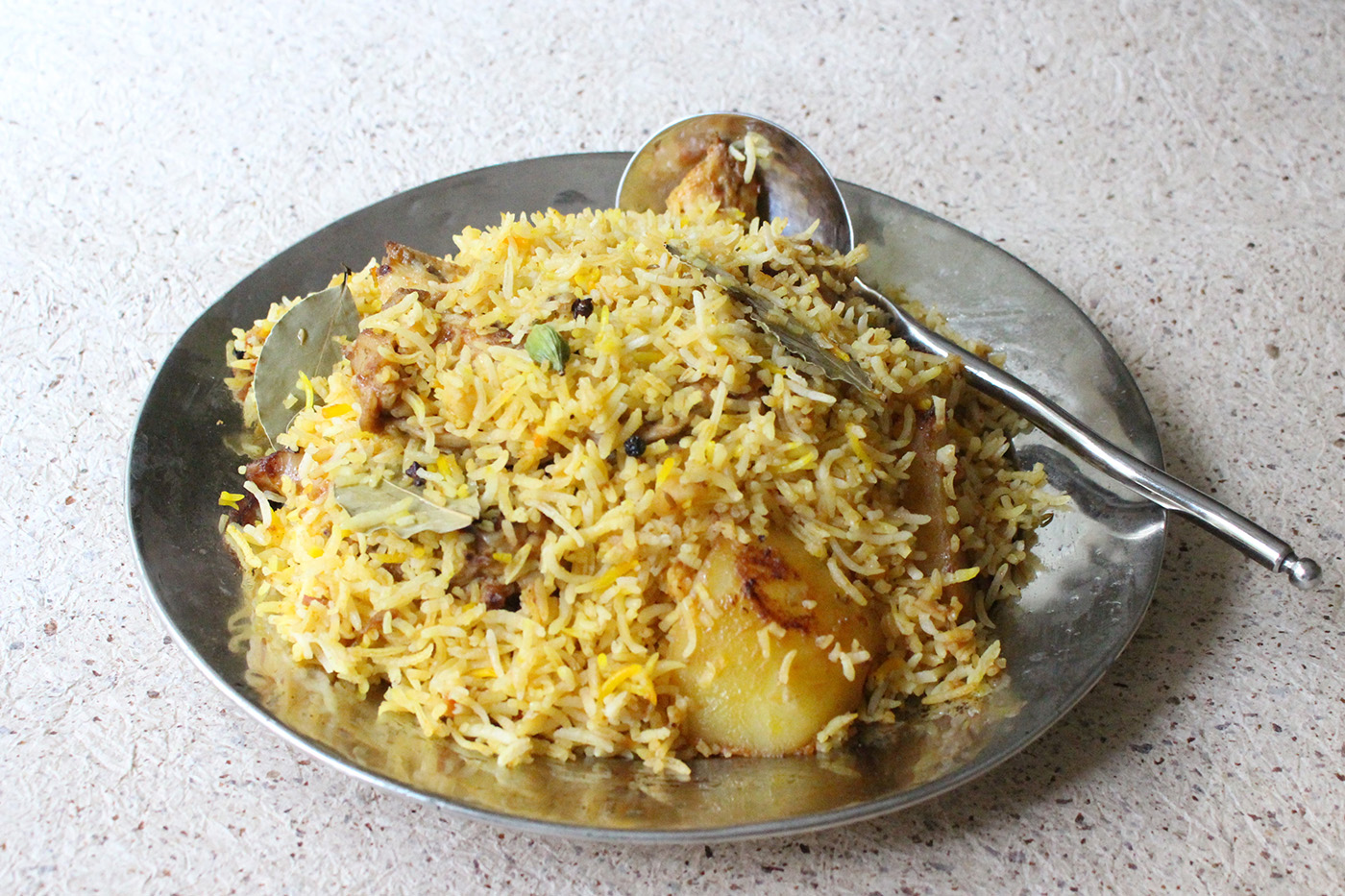One of the oldest dishes that spanned from east to west, across the Persian plateau, and Central Asia is what we continue to revere as the dish of a feast connected with all festivities, especially weddings, however stately, big or small, grand or not. There are many versions of this predominantly rice and meat dish, with variations of chicken, fish, shrimp or even vegetables. Cooked in fat to separate each grain of rice, it is as aromatic and fragrant as they come and is served to nobility and common people, often sprinkled with dry fruits, nuts, boiled eggs, herbs and/or barista-crisply fried onions.
Gos no palau and masala ni daar are traditional Parsi wedding dishes. Or a chicken one at a compromise. But always with potatoes, much like the Kolkata biryani (which is not a given in other palaus; this is an absolute must, a deal breaker). If it is made with seafood, they prefer to serve their jhinga or macchi no palau with a dahi nu raitu. Vegetable palaus are not commonly prepared but can be really delicious.

The word is distinct in several dialects, such as ‘polow‘ to the Persian and ‘pilav‘ in Turkish; Arabic says ‘pilaf‘ or ‘pilav‘, and Hindi and Urdu say ‘pulao‘. The Mughals introduced the biryani, which was more opulent and extravagant and was majestically served to the royal court. Adding saffron represented their lavishness of wealth, deemed to be the most expensive spice in the world. They also added dairy to the dish, using milk and yoghurt. And with that, a subtle distinction emerged between the pilaf, with its rice cooked raw in broth, aromatics, and dry fruit, nuts, meats, chickpeas, lentils, and vermicelli, and the richer biryani, with par-boiled rice cooked with an abundance of ghee, dairy, meats, saffron, cardamom, and even rose! However, this is not a dish cooked solely for a celebration. Central Asian countries like Tajikistan claim to contain over 200 types of palau. Ingredients for this everyday recipe include lentils, beans, vermicelli, and fresh herbs. Chickpeas, carrot slivers, and raisins are traditional accompaniments to a leg of lamb. Being who we are, ancient and food-centric, Parsis continue to refer to their dishes as ‘palau’, but we tend to cook it as a best-described biryani.
Seeing these Palaus and Biryanis cooked over a wood fire in the largest pot available, or degchi, is both an art and a delight. A deg begins a few hours before the ceremony, when spices are mixed into the rice and sealed with a soft dough formed of wheat and water before being left to steam. This slow-cooked dish takes a few hours to prepare and is ready to serve piping hot at their leisure. However, we must not underestimate the enormity of this dish, which is sold on street corners by the plate, in upscale restaurants at exorbitant prices, or at street festivals in the marketplace; once linked empires, brought trade and fortunes to some, and was enjoyed by the rich nobility and court jesters alike; nor the fact that, even after centuries, people from halfway around the world – continue to enjoy it, while bringing people together and building a community through the sharing of pots of palaus and biryani.
